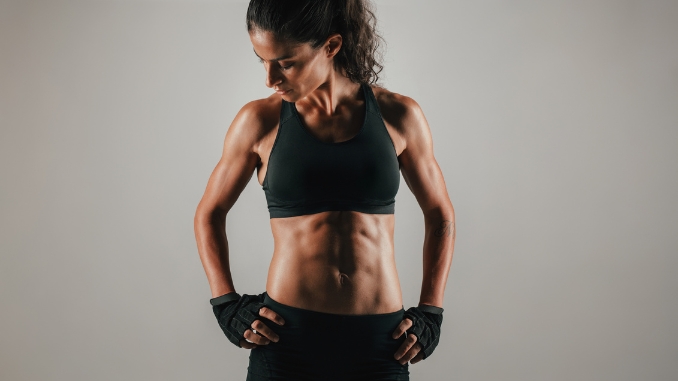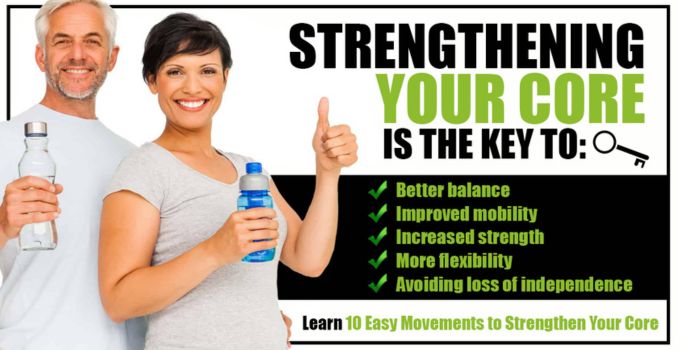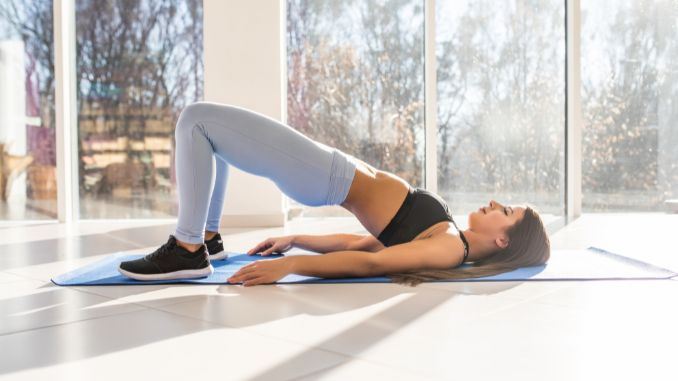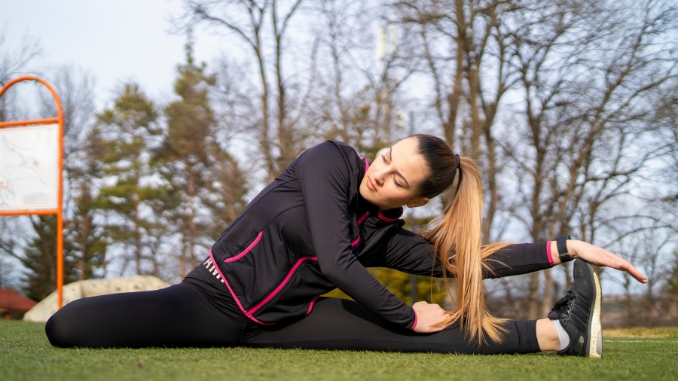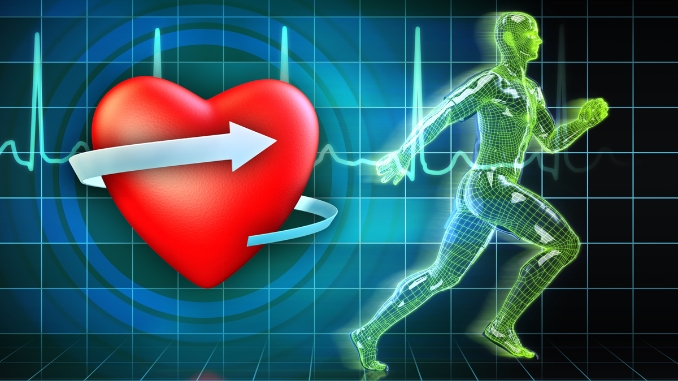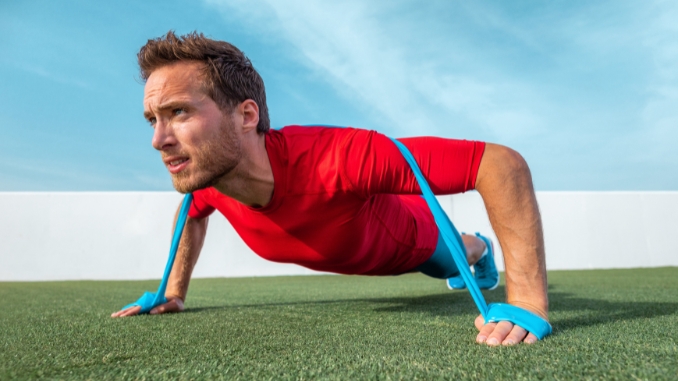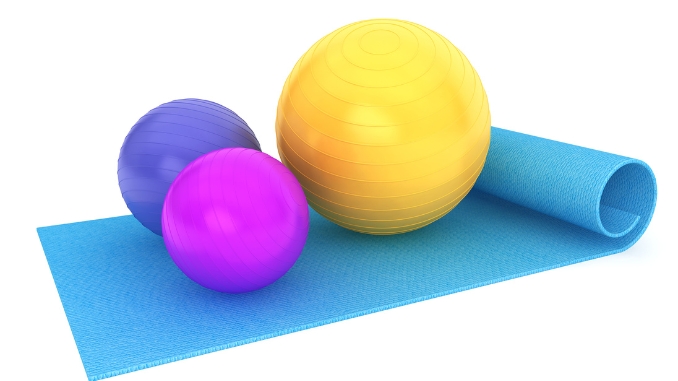Ready to strengthen your belly while also making your heart happy? Try out the cool in-and-outs workout—it's like a fun fitness dance. An in-and-outs workout is an abdominal exercise that involves quickly moving your body in and out of a specific position. It is a dynamic exercise that strengthens the core muscles, promotes cardiovascular health, aids in calorie burning, and enhances flexibility, balance, and coordination.
Research, such as a study in BMC Public Health, supports the idea that regular physical activity, including core-focused exercises like the In and Outs, can significantly improve physical and mental health and potentially extend one's lifespan.
Benefits of the In and Outs Workout
A study in BMC Public Health[¹] shows that exercise helps everyone, healthy or not, by improving physical and mental health and reducing pain and disability. The longer the study, the more it showed that exercise could help people live longer.
However, the quality of research affected the reported benefits, with better studies showing smaller decreases in death rates. Exercise has a notable effect on people with mental health issues, possibly because it increases substances in the brain like neurotrophic factors or beta-endorphins.
In and outs workouts, particularly those focusing on the core, can offer several benefits:
Core Strength
In-and-outs mainly work your abdominal muscles, like the rectus abdominis and obliques, helping to build a stronger core.
Cardiovascular Health
The active movements in in-and-outs can increase your heart rate[²], which may help improve your heart health. This also reduces body fat and helps manage diseases linked to obesity, like heart disease and type 2 diabetes.
Calorie Burning
These exercises are fast-paced and use various muscle groups, which might help burn calories and support weight management and belly fat reduction.
Flexibility
Some variations of in-and-outs might enhance your range of motion, particularly in the hip flexors and lower back. Aerobic and strength exercises are good for increasing the range of motion (ROM), especially in the hips, knees, and ankles.
Balance and Coordination
Performing these exercises can challenge your balance and coordination, which helps with stability and control.
Time Efficiency
In-and-outs are quick exercises that can fit easily into your workout routine, offering a time-saving option for busy people.
In-and-outs often don't require equipment, making them convenient for those who prefer bodyweight exercises or don't have gym access.
Hit the Core: Target Muscles of In-and-Outs Workouts

Rectus Abdominis
This muscle runs vertically on the front of your abdomen, known as the "six-pack." In-and-outs engage it by contracting the muscles when you pull your knees to your chest.
Obliques
The obliques include external and internal layers. Twisting movements in in-and-outs, like in bicycle crunches, work these side muscles.
Hip Flexors
These muscles help you lift your legs toward your torso. In-and-outs activate the hip flexors when you raise and lower your legs, engaging these muscles.
Transverse Abdominis
The deepest abdominal muscle, important for core stability. In-and-outs work this muscle by stabilizing the core during the exercise, boosting strength and stability.
Lower Back
The erector spinae along the spine helps with bending and rotating. In-and-outs engage these muscles for spinal stability, especially when you lean back slightly during the exercise.
Quadriceps
The quadriceps are involved as they help to extend and retract the legs during the exercise.
In-and-Outs Workout
1. Leg in and Outs
Begin in an upright sitting position with your feet flat on the floor, maintaining good alignment with your head, shoulders, and hips. Place your hands on your side with your fingers pointing forward for support. Slightly lean back and engage your core. In a controlled manner, bring your knees toward your chest, then extend your legs out straight without touching the floor. Repeat the movement.
To intensify the exercise, extend your arms in front.
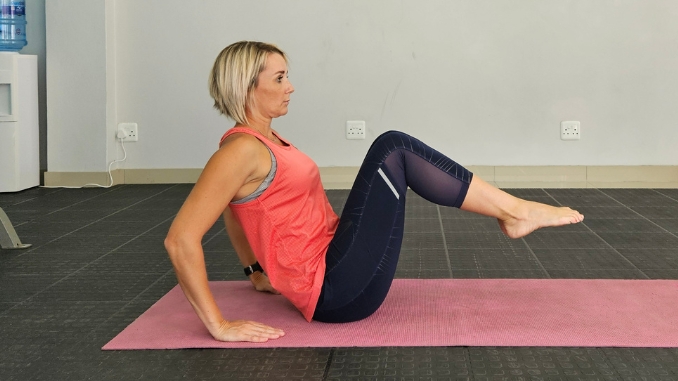

2. Bicycle Crunches (Elbow Touches)
Lie on your back with your knees bent and feet flat on the floor. Place your hands by your ears or interlock your fingers behind your head. Contract your core. Inhale and crunch your upper body forward, then drive your left knee towards your chest, bending at a 90-degree angle.
Exhale, bring your right elbow to your left knee while simultaneously extending your right leg. Bring your left elbow to your right knee while extending your left leg, maintaining the elevation above the floor. Alternate sides in a smooth, pedaling motion, as if you're riding a bicycle. Relax and return to the starting position.
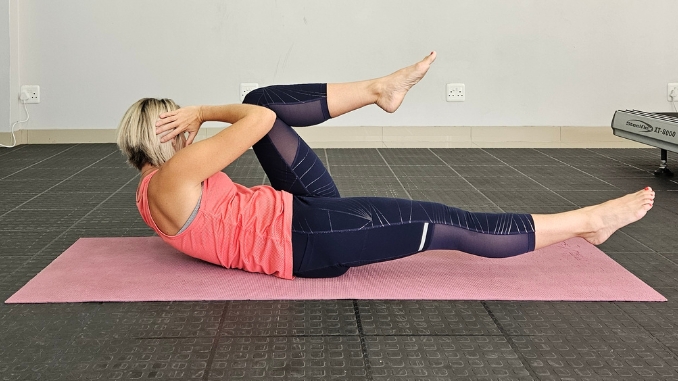

3. V-Ups
Lie on your back on the floor with your legs extended and feet close together, maintaining good alignment with your head, shoulders, hips, and legs. Engage your core. Bring your arms overhead with your hands close together, perpendicular to your body, raise as high as your body allows, then lift your legs off the ground.
Slowly lift your upper body and legs simultaneously, trying to touch your toes with your hands, your arms are in line with your ears. Slowly lower your upper body, arms, and legs to return to the starting position. Repeat the movement.
This exercise targets your upper abs and tones your legs.

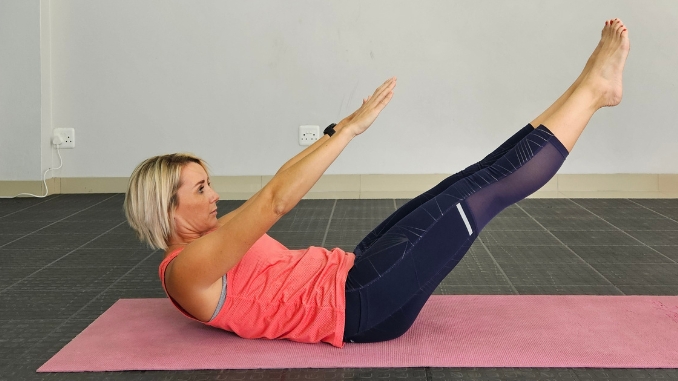
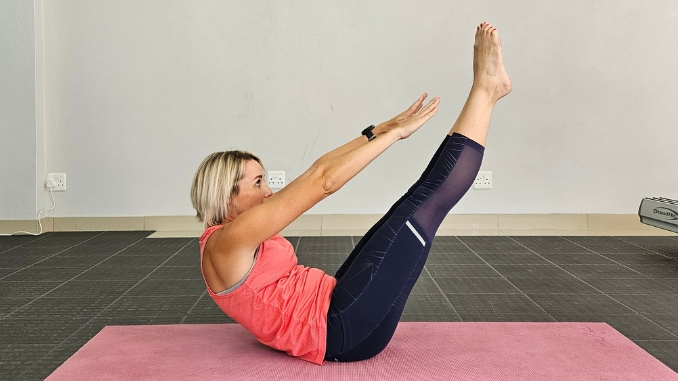
4. Scissor Kicks
Lie on your back on the floor with your hands under your hips and legs extended, maintaining good alignment with your head, shoulders, hips, and legs. Engage your core. Lift your legs off the floor or to a 45-degree angle from the floor and scissor them, crossing one over the other and then switching. Lower down your legs, return to the starting position, and repeat the movement.
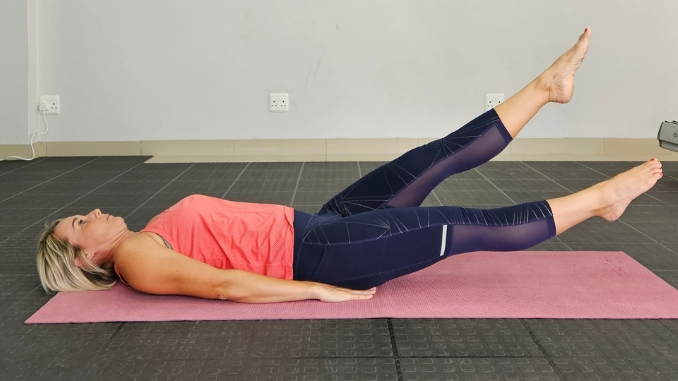
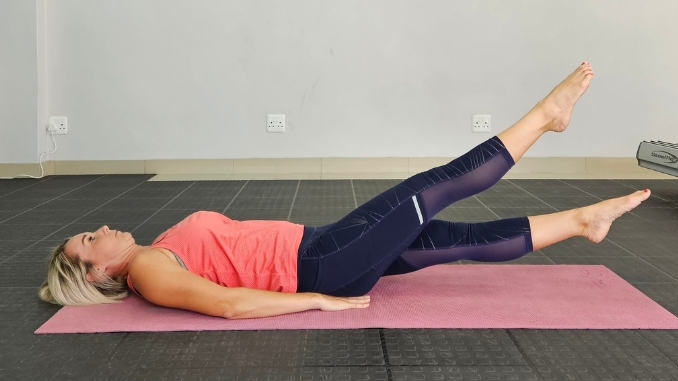
5. Mountain Climbers
Move into a four-point position, with your knees below your hips and your hands beneath your shoulders. Tighten your core. Move into a full plank position, maintaining proper alignment with your head, shoulders, hips, and toes. Bend one knee and lift to chest height. Step back to the plank position and repeat the movement with your opposite knee. Repeat the movement, alternating knees in a climbing motion.
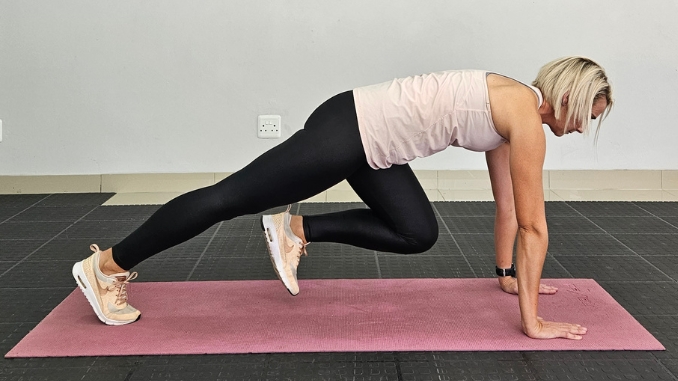

6. Plank Jacks
Begin in a four-point position, with your knees below your hips and your hands beneath your shoulders. Move into a full plank position, maintaining proper alignment with your head, shoulders, hips, and toes. Contract your core and glutes. Depending on your comfort level, jump your feet wide apart, landing softly on your toes and as far as your body allows. Jump your feet back in to return to the starting position while keeping your core tight. Repeat the movement.
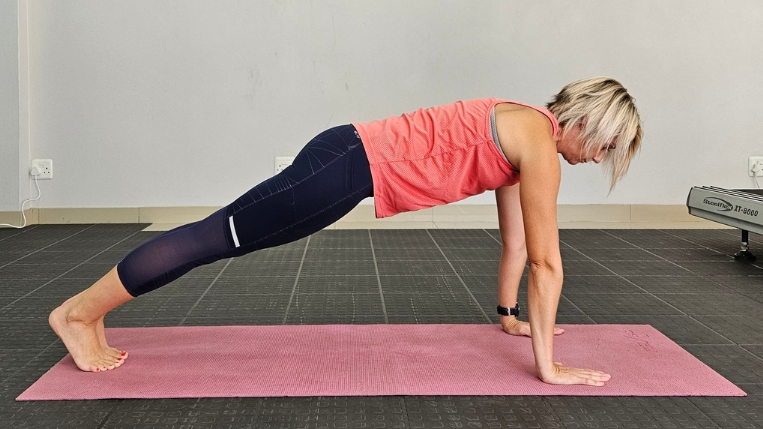
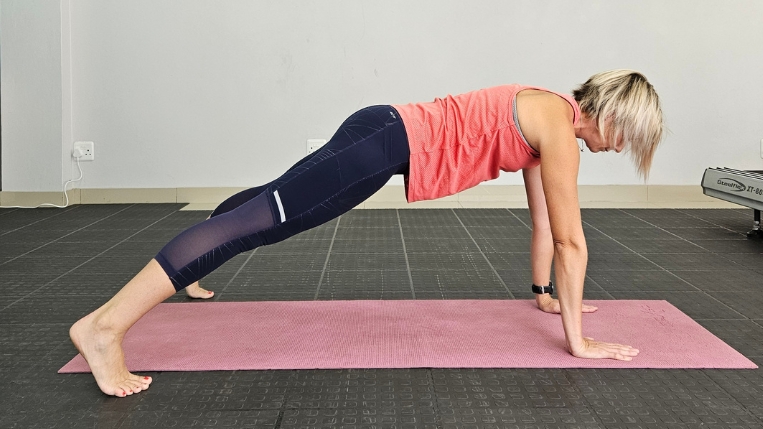
Tips to Perform In and Out Exercise Correctly
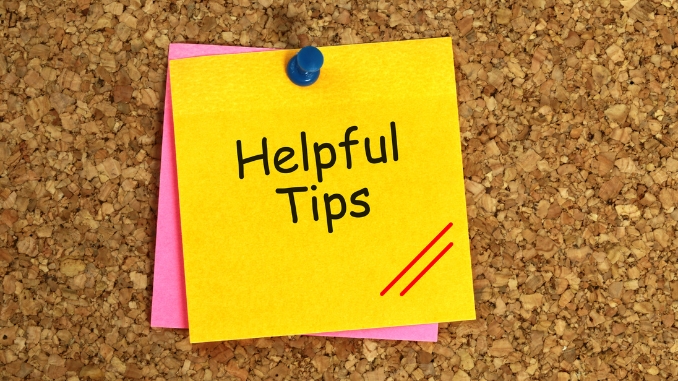
- Sit on an exercise mat with a straight spine and engage your core to maintain good form.
- Move slowly and with control during the workout to focus on your abs and avoid injury.
- Keep your spine neutral to prevent lower back pain; avoid over-arching or rounding your shoulders.
- Keep your head aligned with your spine, avoiding pulling it forward during the exercise.
- Breathe out when you bring your legs in and breathe in when you extend them to keep oxygen flowing.
- If you're a beginner, start slowly to get used to the movements before speeding up.
- Aim to bring your legs in as far as you can without losing form or control.
- Stop if you feel pain, especially in your back or neck, and seek advice if needed.
- Warm up before starting to prepare your muscles and reduce injury risk.
- Do the in-and-out workout regularly, increasing intensity as you get stronger, to work your upper and lower abs and legs.
Conclusion: Achieving Your Fitness Goals with the In and Outs Workout

Adding the in-and-outs workout to your routine can boost your fitness by strengthening and stabilizing your core muscles. Start with basic moves, and gradually progress to more challenging variations. Regular practice enhances core stability and strength. This efficient workout helps achieve a stronger body while keeping you engaged.
Strengthening your core is the key to better balance, improved mobility, increased strength, more flexibility and avoiding loss of independence. So check out this 10 Easy Movements for a Stronger Core now!
Frequently Asked Questions
1. What are seated in-and-outs good for?
Seated in-and-outs focus on the lower abs by having you sit, lean back, and move your legs in and out. This strengthens your core and improves stability.
2. What muscles do in-and-outs work?
In-and-outs mainly work your core, including your abs and obliques, by rotating your torso and hips. They also involve your shoulders, arms, and lower back to keep you stable.
3. Who can't perform in-and-out exercises?
People with back or neck problems, chronic pain, or balance issues should be careful or avoid in-and-outs exercises. Pregnant women and beginners should start slowly and seek advice.
4. Can I get rid of Hip dips with in-and-out exercise?
The in-and-outs exercise mainly works the abs but doesn't specifically target hip dips, which are natural body shapes determined by your bone structure and fat distribution. To potentially help with hip dips, try exercises like side leg lifts, squats, and hip abductor moves.

